Moderate overlap front: original test
Rating applies to 2004-09 models
Tested vehicle: 2004 Mazda 3 s 4-door
The Mazda 3 was introduced in the 2004 model year as a replacement for the Protege.
| Evaluation criteria | Rating |
|---|---|
| Overall evaluation | |
| Structure and safety cage | |
| Driver injury measures | |
| Head/neck | |
| Chest | |
| Leg/foot, left | |
| Leg/foot, right | |
| Driver restraints and dummy kinematics | |
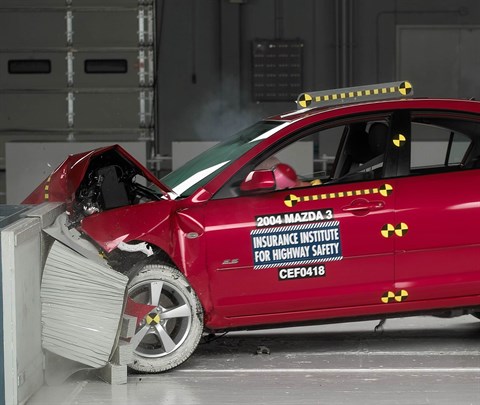
Action shot taken during the frontal offset crash test.

The dummy's position in relation to the steering wheel and instrument panel after the crash test indicates that the driver's survival space was maintained very well.
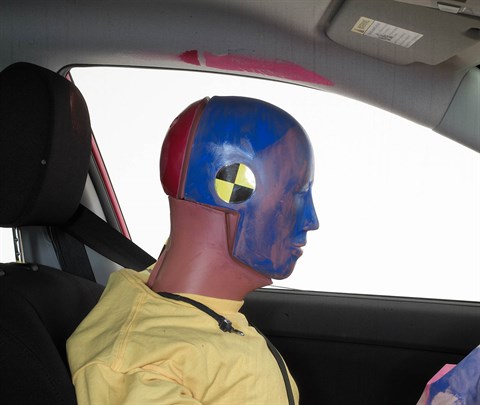
Smeared greasepaint indicates where the dummy’s head hit the roof rail during rebound. Head acceleration from this hit was low.
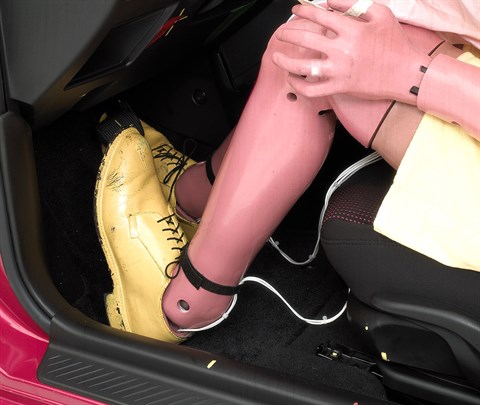
Intrusion into the driver's space was minimal, and forces on the legs and feet were low.
Side: original test
Rating applies to 2005-08 models built after August 2004
Tested vehicle: 2005 Mazda 3 i 4-door without optional side airbags
The Mazda 3 was introduced in the 2004 model year as a replacement for the Protege.
All 2005 and later Mazda 3 models manufactured after August 2004 include door trim panel changes to improve occupant protection in side-impact crashes (note: information about when a specific vehicle was manufactured is on the certification label typically affixed to the car on or near the driver door). Beginning with 2009 models, side airbags were made standard.
| Evaluation criteria | Rating |
|---|---|
| Overall evaluation | |
| Structure and safety cage | |
| Driver injury measures | |
| Head/neck | |
| Torso | |
| Pelvis/leg | |
| Driver head protection The dummy's head was hit by the intruding barrier, producing high head injury measures. | |
| Rear passenger injury measures | |
| Head/neck | |
| Torso | |
| Pelvis/leg | |
| Rear passenger head protection The dummy's head was hit by the window frame and window sill of the rear passenger door, producing moderately high head injury measures. | |
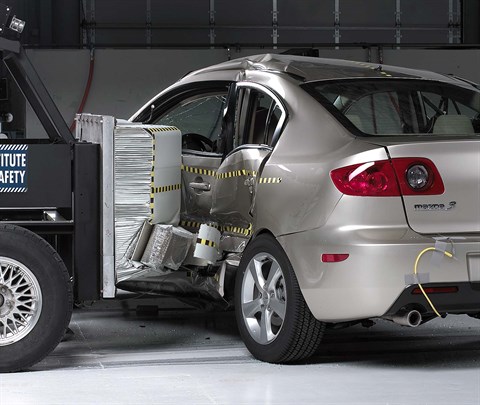
View of the vehicle and barrier just after the crash test.
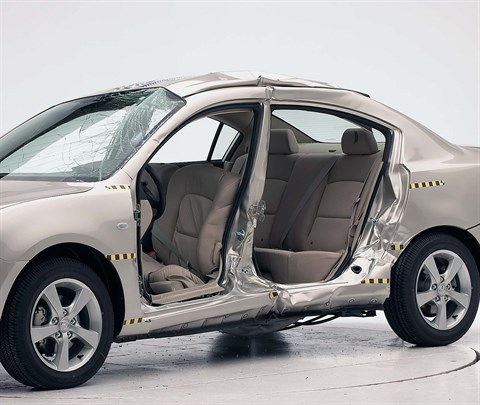
View of the vehicle after the crash with doors removed, showing damage to the occupant compartment.
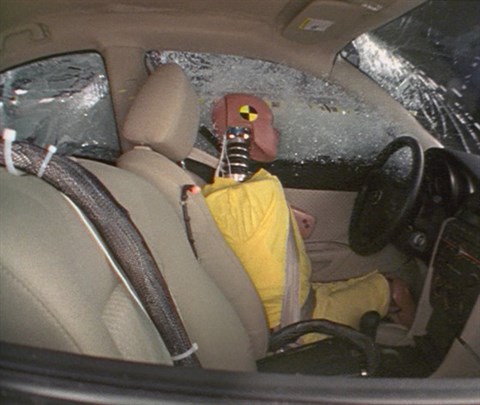
Action shot taken during the side impact crash test showing the driver dummy's head being hit by the intruding barrier.
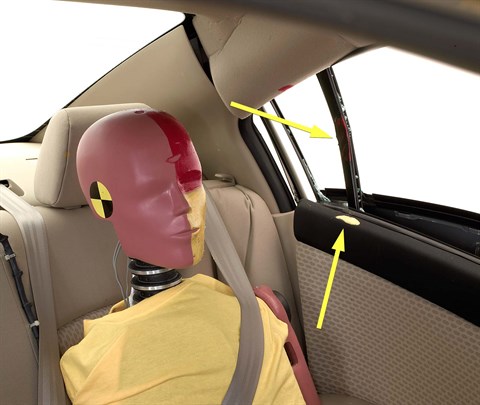
Smeared greasepaint shows where the rear passenger dummy's head was hit by the window frame and window sill of the rear passenger door.
Head restraints & seats
Seat type: Base seats
| Overall evaluation | |
|---|---|
| Dynamic rating | |
| Seat/head restraint geometry |
Seat type: Seats with adjustable lumbar
| Overall evaluation | |
|---|---|
| Dynamic rating | |
| Seat/head restraint geometry |
About the head restraint & seat test
Currently, IIHS tests apply only to front seats.
